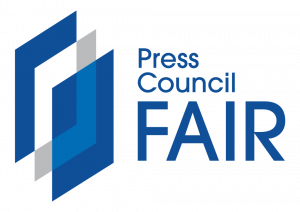 IT automation is no longer a luxury or a forward-thinking experiment – it’s a business imperative. Entities in every sector are navigating previously unimaginable levels of complexity in their IT environments while concurrently being tasked with doing more with less.
IT automation is no longer a luxury or a forward-thinking experiment – it’s a business imperative. Entities in every sector are navigating previously unimaginable levels of complexity in their IT environments while concurrently being tasked with doing more with less.
Pressure to boost efficiency, scale innovation and quicken time to market continues to mount, all with budgets that aren’t expanding alongside their technological needs. Strategic and intelligent automation is not only useful in this setting but essential.
From manual chaos to strategic clarity
For many companies, operational friction is the norm. Disconnected teams, overlapping tools and a widening skills gap create a fragmented IT landscape that hinders productivity and drives up costs. Manual processes remain embedded in daily operations – from patching and provisioning to root cause analysis – slowing down service delivery and increasing the risk of security and compliance issues.
While some companies have taken the first tentative steps towards automation, most do so in a patchwork fashion, using task-based tools that don’t have the interoperability and scale they really need. This “tool sprawl” often leads to siloed efforts, inconsistent governance and wasted resources.
In fact, very few businesses currently have fully automated IT processes, although that number is expected to grow. It’s clear that progress is happening – but slowly.
It’s important to recognise that new technologies like generative AI, although promising, cannot hope to compensate for outdated or inefficient IT processes. Without a strong automation foundation, no business can fully harness the benefits of AI or respond on the fly to business needs.
To thrive in today’s landscape, IT automation must be woven into the very fabric of the enterprise – across infrastructure, applications, networking and edge devices.
A foundation for enterprise-grade automation
This is where Red Hat’s Ansible Automation Platform, an enterprise-ready, scalable and adaptable solution made to streamline IT operations in a wide range of hybrid settings, comes in. The Ansible platform helps businesses automate more strategically and effectively, regardless of where they are in their automation journey.
It offers a standardised, centralised platform that fuels team collaboration, limits tool sprawl and synchronises automation goals with business objectives, as opposed to automating discrete areas. Openness and interoperability are at the heart of its design, and it integrates easily with current systems, including multi-cloud systems and on-premises data centres.
The key components of the platform include:
- Event-driven Ansible: Allows firms to react to real-time events and automate responses proactively, which improves resilience, ensures uptime and reduces the burden on IT teams.
- Ansible Lightspeed with IBM watsonx Code Assistant: This feature empowers teams to build and maintain automation content faster using generative AI. This means more rapid time to value and greater consistency in automation practices.
Red Hat’s Ansible Automation Platform is much more than a technical solution – it’s a catalyst that drives a total transformation of the business. Automating processes, maintaining governance, and enhancing security and compliance allow IT firms to focus on strategic initiatives instead of arduous, manual work.
The ROI speaks for itself. IDC reports that organisations leveraging the Ansible Automation Platform have seen a three-year return on investment of 668%, with an average payback period of a mere eight months. That’s not just progress – it’s acceleration.
Why Obsidian Systems is the right partner
As powerful as Ansible is, the success of your automation journey depends just as much on the people and expertise guiding it. That’s where Obsidian Systems comes in.
With over 30 years of experience in open-source technology and deep expertise in Red Hat solutions, Obsidian Systems is better positioned than anyone to help entities get the maximum value out of their Ansible investments. Whether a business is just setting out on its automation journey or is looking to scale its efforts enterprise wide, Obsidian brings the insight, services and support it needs to succeed.
 Here’s what sets Obsidian apart:
Here’s what sets Obsidian apart:
- Certified Red Hat expertise: Gain access to certified professionals with extensive experience in Ansible, RHEL deployments and infrastructure-as-code practices.
- Tailored implementation strategies: No two businesses are alike. Obsidian collaborates closely with its customers to create solutions that match precise business and IT requirements, delivering fit-for-purpose implementations every time.
- End-to-end support: From the outset and throughout – the initial setup to ongoing optimisation – Obsidian offers continuous support and training, helping teams gain confidence and self-sufficiency.
- Proven track record: With a long history of delivering successful IT transformation projects across industries, Obsidian brings credibility and assurance to every engagement.
Also, Obsidian enables businesses to modernise their application architecture, automate workloads across hybrid environments and ensure containerised applications remain secure and compliant with enterprise governance standards.
Scalable, secure, strategic automation
Automation is no longer a question of “if”, but “how quickly” and “how well”. Those who fail to automate at scale will find themselves outpaced by nimble competitors that can deliver services faster, more securely and with fewer resources.
The combination of the Red Hat Ansible Automation Platform and Obsidian Systems delivers a compelling proposition to address this challenge, helping businesses build a foundation for automation that is scalable, secure and futureproof.
By leveraging the strengths of Red Hat’s robust, open-source platform and Obsidian’s tailored, expert-led implementation strategies, your company can shift from reactive operations to proactive innovation.
It’s time to prioritise IT automation because, in today’s world, standing still is the fastest way to fall behind.
- Read more articles by Obsidian Systems on TechCentral
- This promoted content was paid for by the party concerned



